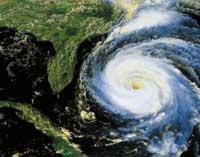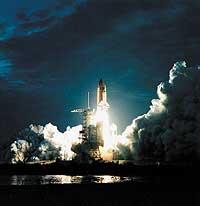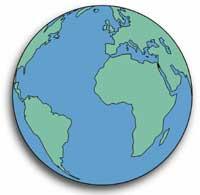Coriolis, the whirlpool of new ideas

The family of Coriolis had to leave Paris during the French revolution for their relations with the nobility. Years later they returned and there he studied, first at the Polytechnic School and then at the School of Engineering of Roads and Bridges.
At the death of his father, he begins to work to support his family, being professor of mathematical analysis at the Polytechnic School. For this post he proposed the mathematician Cauchy. He later taught mechanics at the School of Art and Manufacturing.
Years later he was offered the post of Cauchy himself and other teaching posts, but he preferred to investigate rather than teach. The research was their most important task. He finally accepted an offer at the School of Engineering of Roads and Bridges. Later he was given two chairs and was a member of the Academy of Sciences in the section of Mechanics. According to his colleagues, he was a great educator and renewed the teaching methods of mechanics. He left teaching in 1838 and was head of studies of the Polytechnic School until his death in 1843.
His best-known work was published in the book Sur les équations du mouvement relatif des systèmes de corps. In it he described an apparent force that affects the moving objects. He noted that it is due to the rotation of the Earth and called Coriolis force. As a result of this force, moving oceanic and atmospheric objects and currents are diverted to the right in the northern hemisphere and to the left in the south.

Coriolis is a force proportional to the speed and latitude of the moving element. In fact, when the Earth rotates on its axis, the rotation speed is different according to latitude.
The rotation speed of a point located a few meters from the North Pole is low compared to the speed of a point of Ecuador. For 24 hours, these stitches make a complete turn to the shaft and return to the initial position. The difference in speed is due to the route that the equator makes in this tour is much greater than the one that is close to the pole. In intermediate latitudes, intermediate velocities are obtained.
Movement, energy and work
The trailers and hurricanes are due to this force. The effect of the force of Coriolis has, therefore, great importance in meteorology and oceanography. In any case, the meteorological implication was not discovered by Coriolis, since at that time some concepts necessary to find them were unknown. The North American William Ferrel first proposed this relationship in 1856.
This effect is also important in other areas, such as aeronautics, and its influence should be taken into account when calculating the aircraft route. However, compared to other forces, the Coriolis force is not very large and is not observable in short small-scale processes. It has, therefore, no influence on the circulation of water of bathtubs and sinks, although this myth is very widespread.

In addition to the strength of Coriolis, he proposed other new and important concepts which today are common in the field of physics. He published in 1829 Du> de l'effet des machines (Calculating machine effects) some of them, such as kinetic energy. Kinetic energy is the energy of the body moving by speed, and Coriolis pointed out that it is directly proportional to the mass of the body and the square of speed.
On the other hand, he used for the first time in physics the concept of work with a concrete meaning. Delving deeper into energy and work research, he analysed the efficiency of machines.
He proposed a unit called dynamode to measure work, which was not imposed and which is currently used mainly in the unit of July. However, his ideas are basic in current science. In addition, he contributed a lot, trying to give practical applications to theoretical principles for the development of physics.





